The reason for comparing Ruthenium vs Iridium spark plugs is that they are two of the most commonly used materials for spark plug manufacturing. These plugs, used with an ignition system, deliver an electric current from the ignition to a spark-ignition engine’s combustion chamber. Both types offer exceptional performance and durability when compared to other options.
Due to their superior quality, many people have difficulty deciding which type is right when replacing their spark plugs. This guide has been created detailing the differences between Ruthenium and Iridium spark plugs to assist in this decision-making process. Careful consideration should be taken while reading through this information to make an informed decision about your vehicle's needs.
What is the Ruthenium Spark Plug?

Developing spark plugs is continuing with new materials to ensure excellent performance, longer service life, and effective spark transmission. NGK has recently released an upgraded version called the ruthenium spark plug that combines the precision metal ruthenium as part of its electrode structure. Ruthenium is a member of the platinum group, denoted by Ru with atomic number 44, boasting a higher melting temperature than iridium at 4233° F. However, alloying provides excellent corrosion resistance and oxidation protection, making it ideal for electrical contact applications requiring wear-proof durability.
What is the Iridium Spark Plug?
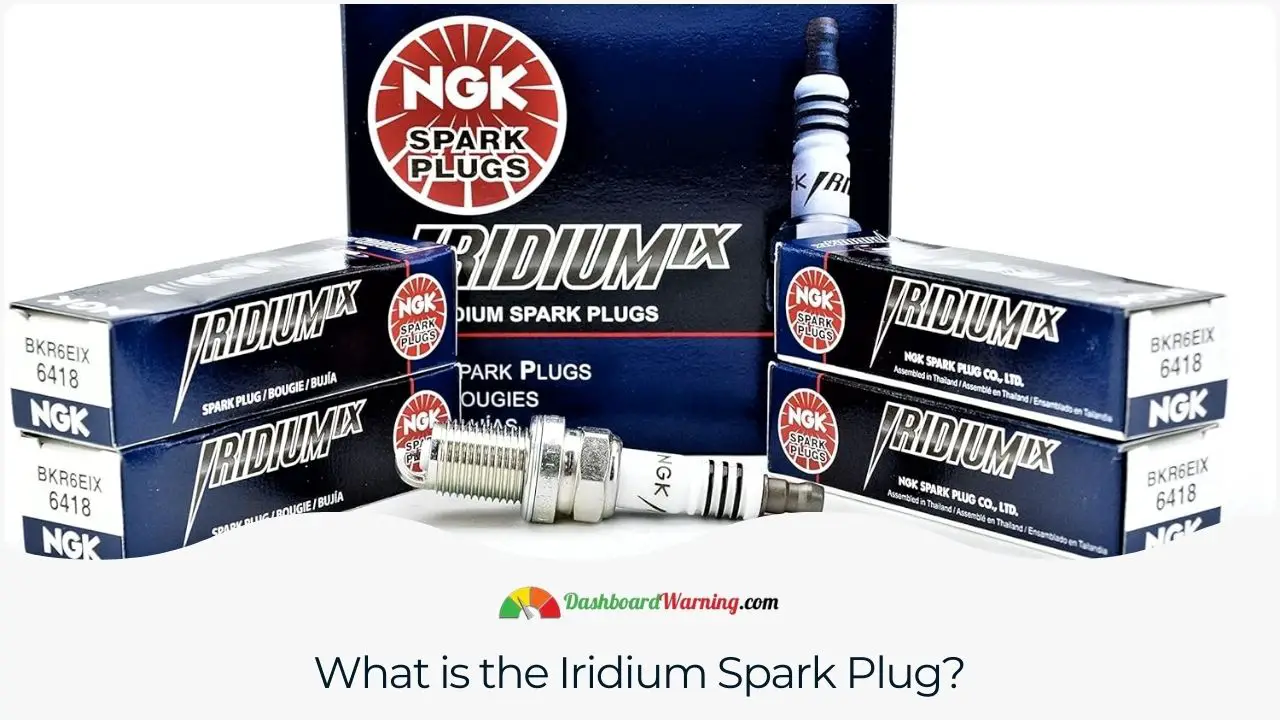
Iridium spark plugs are popular among car owners looking for reliable and efficient vehicle performance. They offer superior combustion, reduced emissions, better fuel economy, and higher horsepower than standard spark plugs. The long-term use of iridium spark plugs helps ensure engines run smoothly while protecting other components from damage due to inferior quality plugs. Iridium spark plugs can last up to 60,000 miles or more, depending on the type of car they are used in; some even provide benefits for as long as 120,000 miles. Regarding high-performance engines, iridium spark plugs are the ideal option available on the market today.
Comparison Chart – Ruthenium Vs. Iridium Spark Plugs
A comparison chart can enable you to understand the variations between ruthenium and iridium swiftly.
| Feature | Ruthenium | Iridium |
| Group Name | Iron family | Cobalt family |
| Durability | Two times longer than iridium spark plugs | Average of 50,000 miles |
| Toxicity | Low Toxic | Toxic |
| Melting Point | 2334° C | 2000° C |
| Service Life | 4X | 2X |
| Properties | Superior anti-corrosion and anti-seizing properties | Anti-corrosion property. |
What Are The Key Differences Between Ruthenium And Iridium?
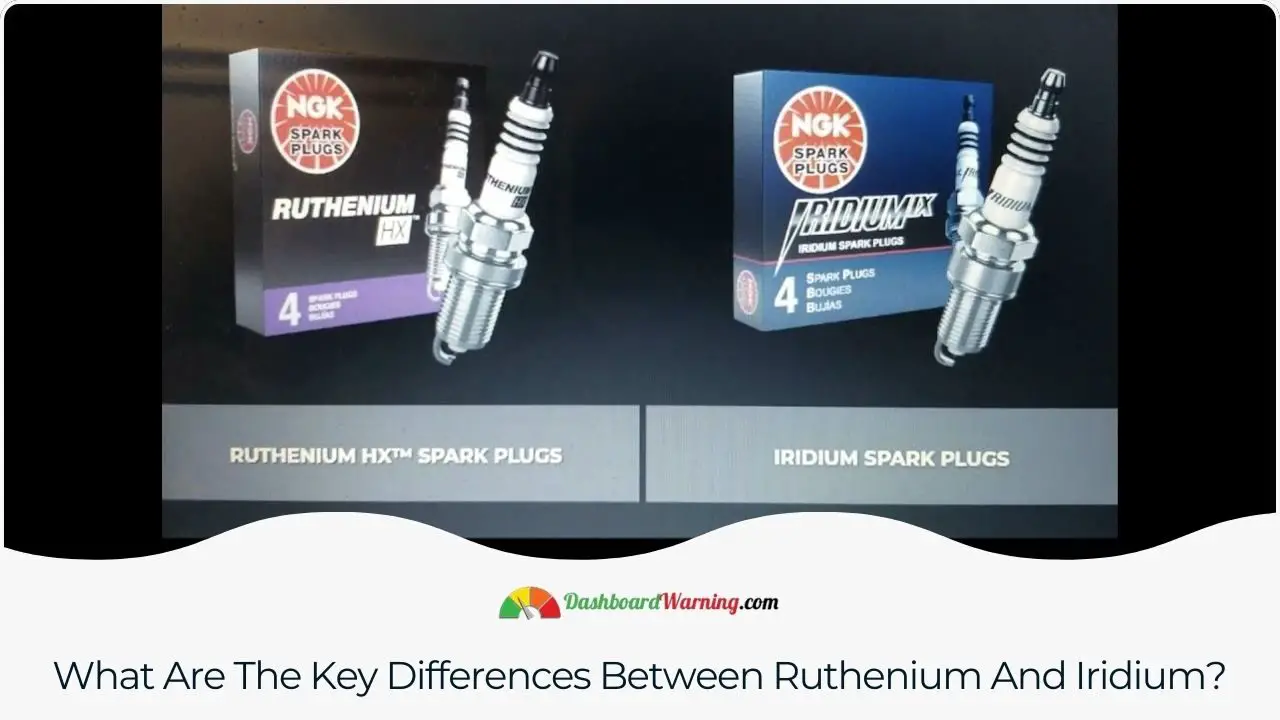
Ruthenium and iridium are spark plugs used for various applications, yet they differ. While both materials can accomplish the same job, one offers advantages in certain areas. This article will examine the key differences between ruthenium and iridium to help readers decide which is more suitable for their needs.
Design
Ruthenium spark plugs come in two designs: double fine electrodes and projected square platinum electrodes. The double fine electrode is designed to maximize ignitibility, minimize discharges for low-heat engines, and is suitable for non-turbo applications. On the other hand, the projected square platinum electrode is ideal for supercharged and turbo engines. Unlike ruthenium spark plugs, iridium spark plugs do not have a different design.
Durability
Ruthenium has been proven to be a superior material in terms of durability, with spark plug life span surpassing that of the platinum family's other materials by a large margin. Not only does it last twice as long as its iridium counterpart, but it also performs remarkably well even under harsh environmental conditions.
High Ignitability
Ruthenium is renowned for its highly ignitable nature, providing maximum combustion capabilities to ensure efficient acceleration and faster fuel response. This expedited cold-start capability ensures reduced emissions during the initial moments of engine startup while also allowing for improved throttle responsiveness that leads to an immediate improvement in acceleration performance. Consequently, drivers will be able to experience a noticeable difference without delay.
Fuel Efficiency
It is universally accepted that older spark plugs are less efficient than newer ones. With this in mind, one should consider using a ruthenium spark plug for their vehicle as it requires less effort to sustain combustion and thus improves fuel efficiency in the long run. Alternatively, an iridium spark plug can improve fuel economy when driving on either city roads or highways, albeit not at the same efficiency level as ruthenium.
What Are The Advantages Of Ruthenium And Iridium?
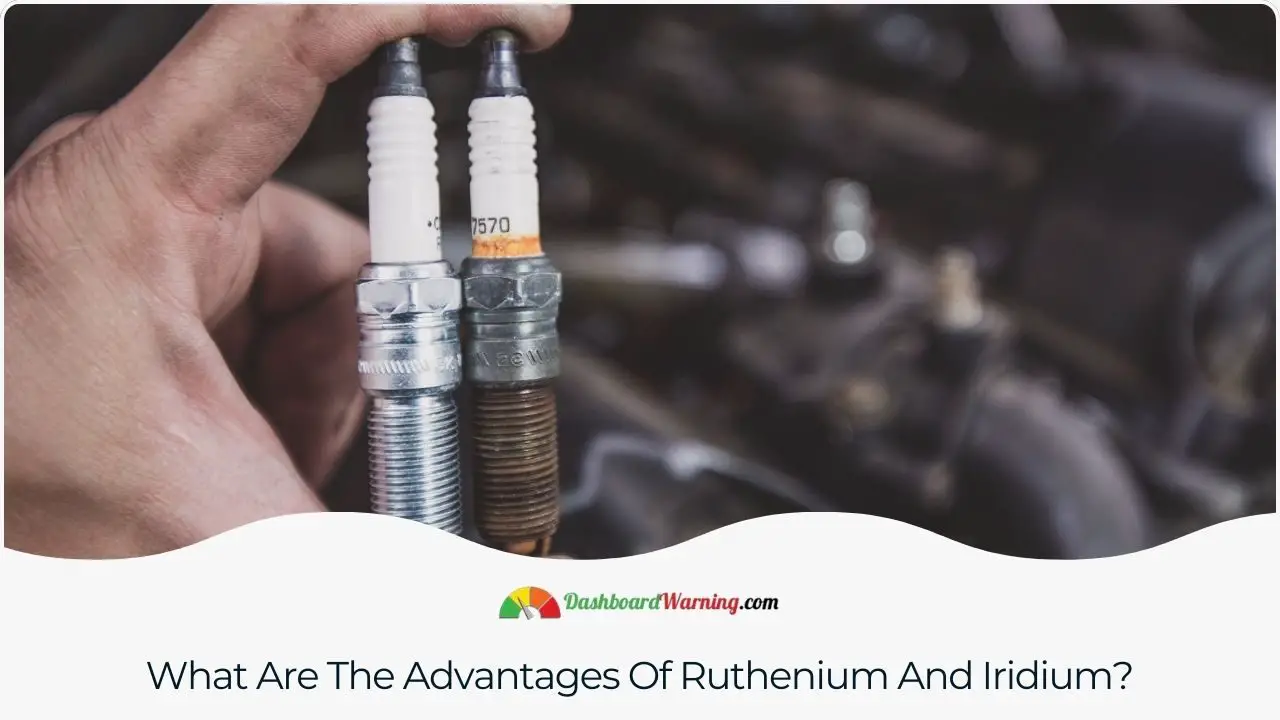
You can make an informed decision by learning about the advantages of ruthenium and iridium.
Ruthenium:
- Ruthenium is designed to ensure smooth acceleration after the gas pedal has been depressed.
- Utilizing ruthenium can help deliver good ignition for a smoother combustion process in your engine.
- Replacing faulty spark plugs with ruthenium can resolve ignition-related issues, performance, and misfires.
- Ruthenium spark plugs are reliable components that work hard to get your car running smoothly each time it starts up.
Iridium:
- Iridium spark plugs offer a lifespan of up to 50,000 miles, and some users may get even more mileage from them.
- The iridium alloy used in constructing these spark plugs is highly corrosion-resistant and melts at temperatures reaching 2,000° C.
- These unique spark plugs require less voltage than other designs due to their small electrode size and design features.
Ruthenium Vs. Iridium – Which is Better to Buy?
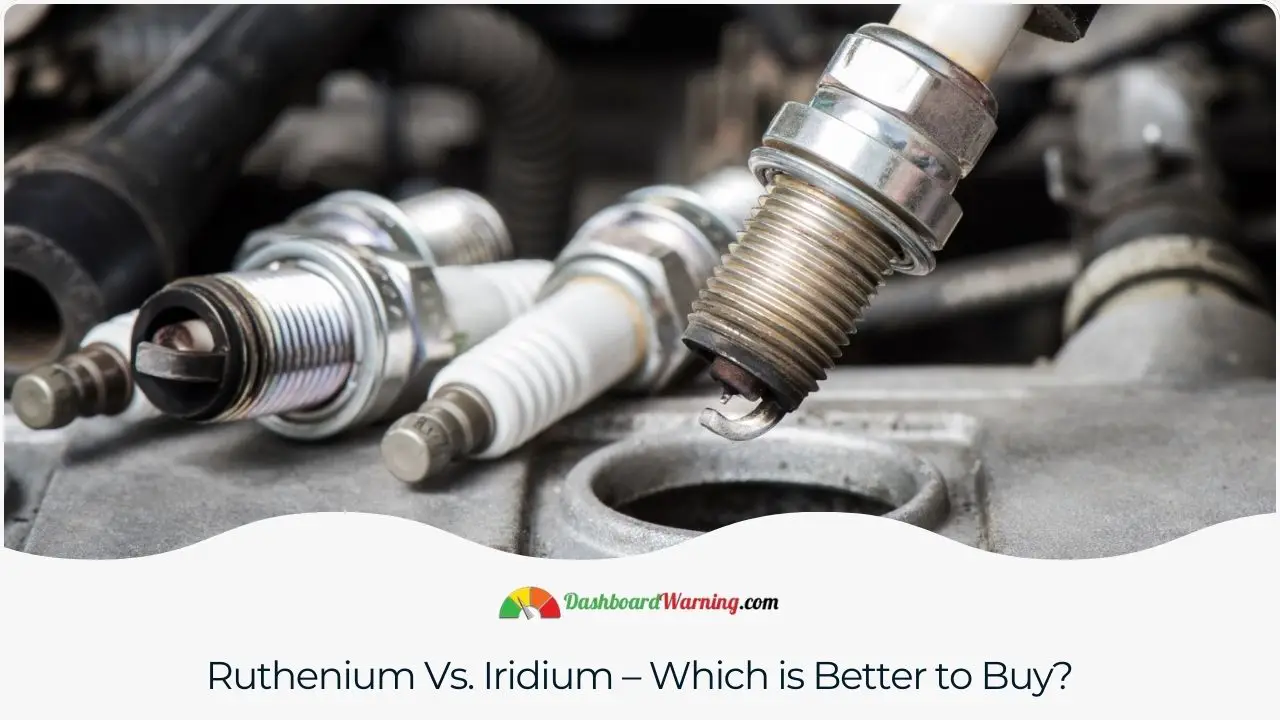
It is essential to consider personal preference when selecting a spark plug. Both ruthenium and iridium are viable options, both of which offer superior performance and long-term reliability. With either option, customers can expect excellent value for their money.
In Summary
When buying a new part for the vehicle, multiple choices can be available on the market. This article discussing ruthenium vs. iridium should help in finding the right path. Each option has pros and cons that must be considered before making a final decision. It is essential to remember to read your vehicle's instruction manual and only buy parts recommended by the manufacturer. Additionally, one must also do research before purchasing anything.
Was this page helpful?

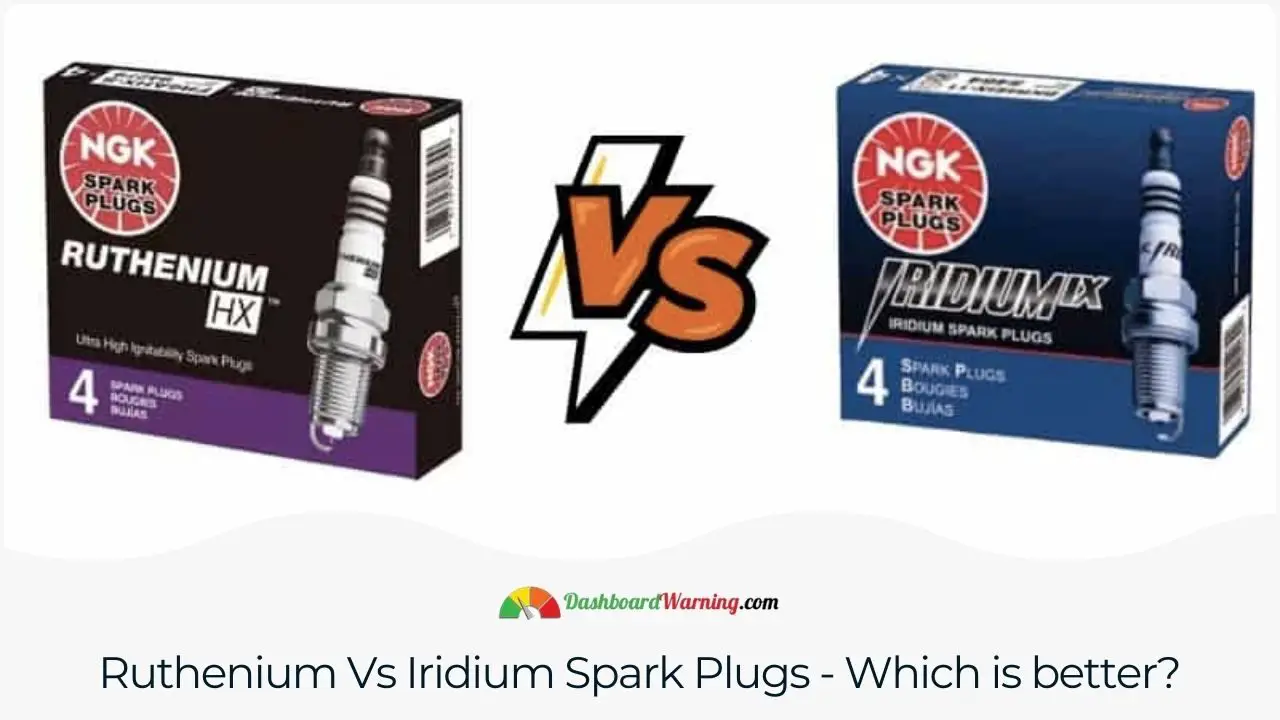
More important content about Tips and Advice
Porsche Cayenne Years To Avoid
Subaru Legacy Years To Avoid - 5 Worst Years
Pt Cruiser Years To Avoid
Use 5w30 instead of 0w20 - Advantages and Disadvantages
Tractor Dashboard Symbols And Meanings
Tips and Advice
Subaru Legacy Years To Avoid - 5 Worst Years
Pt Cruiser Years To Avoid
Use 5w30 instead of 0w20 - Advantages and Disadvantages
Tractor Dashboard Symbols And Meanings
Suzuki Sx4 Years To Avoid - 5 Worst Years
Cummins ISX Years To Avoid and Why